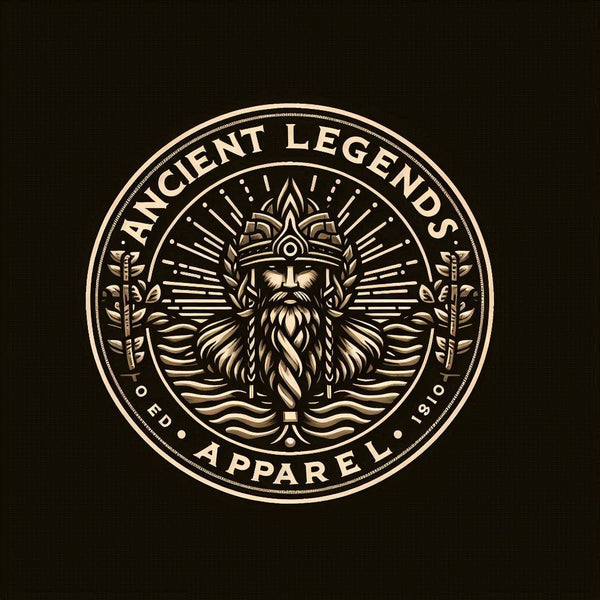Guardians and Protectors in Norse Mythology
Karl FShare
INTRODUCTION
In the intricate web of the Norse mythology, gods and demigods contested with giants and monsters in dimensions far beyond earthly comprehension; representing forces of creation and destruction, life and death, and wisdom and ignorance. But among these celestial and infernal players, there were certain entities who transcended ordinary roles. Their primary task, etched by destiny, was to guard and protect; whether it were holiest abodes, divine artifacts, or cosmic balance. These Guardians and Protectors were indefatigable sentinels of the Norse cosmic order, gate-keepers of life's vicissitudes, and custodians of ancient wisdom. They were the wardens of ethos that both anchored and maneuvered the turbulent waters of Norse cosmology.
ORIGIN AND CULTURAL CONTEXT
The origin of these Guardian figures is aflame with mystery and awe. The Prose Edda, a key reservoir of Norse mythology authored by Icelandic scholar Snorri Sturlson in the 13th century, and the Poetic Edda, an earlier trove of epic poems, delves into the stories of these protectors. Heimdallr, gate-keeper of Bifröst, the celestial rainbow bridge connecting the land of the gods, Asgard, with Midgard, the realm of humans, is one such revered figure. His prime duty was to guard the gods from attacks by the Jotnar, enigmatic giants born from chaotic realms outside the ordered cosmos. Heimdallr’s birth, hinted at in the poem 'Rígsþula' hints that he was the progeny of nine mothers, likely referring to the waves of the sea, bolsters his regal and enigmatic status.
Another such figure was Mímir, the wise counsel of the gods, who became a guardian of knowledge and wisdom following a series of complex events. Mímir’s head, after his death, was preserved by Odin to continue benefiting from his wisdom.
THE LEGEND OR STORY
The role of these guardians was not peripheral but integral to the myths themselves. Among the most dramatic legends involving a guardian figure is Loki's theft of the Brísingamen, the magical necklace worn by Freyja, the goddess of love and beauty. Heimdallr, the watchful sentinel, aids in its recovery, safeguarding the fragile alliance between gods and humans that the necklace symbolized.
Mímir’s tale, on the other hand, takes on a more tragic hue. After the Æsir-Vanir war, he was sent to the Vanir as a hostage but beheaded and returned to the Æsir. Odin, the chief of the gods, bewitched Mímir’s head with spells, preserving it to whisper wise counsel.
INTERPRETATIONS AND SYMBOLISM
In the complex weave of Norse narrative, these guardians are powerful symbols. Heimdallr, the vigilant guardian of heavenly realms, is a manifestation of our spiritual vigilance, a call towards keeping our moral compass unwavering. His association with the ram, known for its unyielding prudence, and his remarkable senses embellish this symbolism.
Mímir, enshrined as the guardian of wisdom, plays a crucial role in the preservation and continuity of knowledge. The manner of Odin's interaction with Mímir embodies the core belief of the Norse tradition: wisdom, in its essence, transcends life and death.
COMPARISONS IN OTHER CULTURES
Universally, mythology explores the archetype of the Guardian or Protector. In Greek mythology, Cerberus, the three-headed dog, guards the entrance to the Underworld, refracting Heimdallr’s role of a gate-keeper. Meanwhile, Athena, the goddess of wisdom and war, mirrors Mímir’s guardianship of wisdom and strategic thinking.
In Eastern mythology, Chinese Dragon Kings protect rain, rivers, seas, and oceans, similar to Heimdallr’s role as an intermediary between earth and heavens. Hinduism reveres Hayagriva, an incarnation of Lord Vishnu as the guardian of sacred knowledge, who shares wisdom without borders, like Mímir.
MODERN REFERENCES AND POP CULTURE
Norse guardians have found prominent references in modern pop culture. Heimdallr's character is adeptly portrayed by Idris Elba in Marvel's "Thor" films. In Neil Gaiman’s ‘American Gods’, Mímir’s well forms a central motif. Rick Riordan's 'Magnus Chase' series stages Heimdallr as an important character with his guard duties and excellent senses.
Video games, too, such as “God of War” and “Valkyrie Profile”, feature these characters, harmoniously blending ancient mythology with modern storytelling techniques.
LEGACY AND LASTING MYSTERIES
Norse Guardians stand as lasting legacies of divine vigilance, sacred wisdom, and a testimony to the compelling richness of Norse mythology. Despite the wealth of knowledge extracted from ancient sagas and archaeological finds, mysteries shroud these Guardians. Questions circulate around their real essence. Was Heimdallr significantly a fertility god as suggested by certain scholars, or does Mímir, with his enchanting tale and wisdom, present a hidden allegory of resurrection? The answers lurk in shadows, making the exploration of these mystifying Guardians and Protectors a fascinating journey into the profound depths of Norse mythology. Their tales illuminate the human fascination with guarding what is precious and protecting our world, reflecting an eternal truth — the greatest stories are those we live and re-live, through myriad lenses, across eons.
